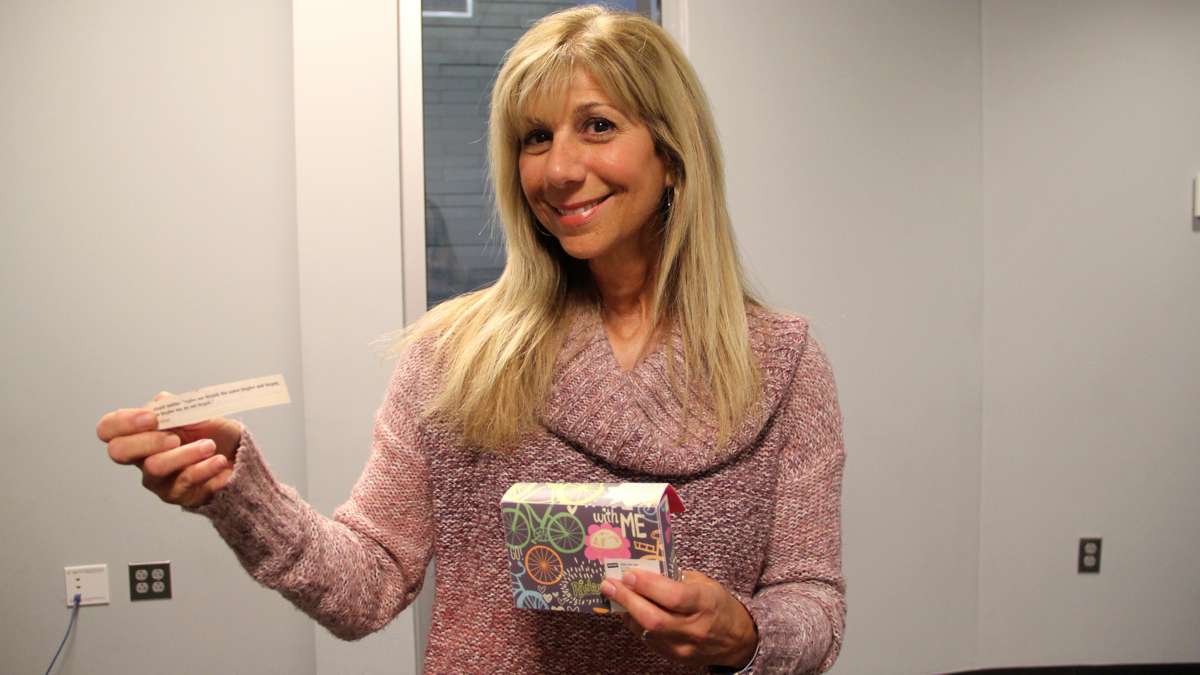After cancer treatment, many patients need years of follow-up care
ListenImagine living through lymphoma, breast and thyroid cancer. Then later, heart trouble hits.
There are about 13 million cancer survivors in the U.S.—and that number is growing.
Why? Partly, it could be better tracking. Also, doctors are spotting tumors earlier, and treatment is improving.
But, once you’ve had one cancer, the chance that you’ll have another is higher. Recognizing those risks, some hospital systems have created after-cancer care programs for this population of people.
“They’re at a point where they are pretty much disease-free or at least in a holding pattern,” said oncology nurse practitioner Linda Jacobs. She is founding director of the Cancer Survivorship Program at the Abramson Cancer Center at the University of Pennsylvania.
The treatments that save lives–radiation and chemotherapy–can create lasting health problems. At Penn, a nurse practitioner becomes a point person who can explain risks and set up a schedule to monitor a patient’s health.
Consider someone who has had chest radiation: that treatment shrinks the tumor, but also exposes the lungs, heart and thyroid.
“People are at increased risk for developing some cardiac issues years down the road, not necessarily right after treatment,” Jacobs said. “Also, they can also develop pulmonary lung problems and thyroid dysfunction. If you are female, your breasts are also in the field of radiation, so you are at increased risk of breast cancer,” she said.
For that woman, the follow-up care might include yearly MRIs and mammograms to look for signs of new cancer.
Some treatment drugs boost concerns about high blood pressure and heart trouble in the future.
“We frankly didn’t really know about them years ago,” Jacobs said.
People who lived through cancer 10 or 15 years ago may not know they need to be monitored.
Jacobs says health researchers are developing tests that may someday predict one patient’s risk for a second cancer, compared to another person who has had the same treatment.
“We’re not quite there yet, but we are getting there,” Jacobs said.
The chances for a new cancer are very individual, she said, and the calculation includes factors such as family history and a patient’s own biology.
‘I just keep on going’
Ventnor, New Jersey resident, Ann Marie Wiesen, 51, is still coping with the “late-effects” of cancer three decades after her first diagnosis.
She had lymphoma as a teenager. In her late 20s, Wiesen was treated for breast cancer, then thyroid cancer hit at age 41.
Still, she’d prefer that you not refer to her as a ‘survivor.’ She said joining a community of folks keeping cancer at the forefront of their lives isn’t her way.
“I’ve never worn pink, maybe because I would think it would draw attention to the fact that I did have the breast cancer,” she said. “I never felt the need to have a support group outside of my family.”
Wiesen says every part of her body has been affected by radiation treatment in her teens—or the surgeries she needed as an adult.
“I see it in the mirror every day,” she said. “I’m cut like a fileted fish. I have a multitude of heavy scars, I’m cut from here to here, here to here.”
Doctors told Wiesen that having a baby might be difficult, and a series of infertility treatments failed. But then her daughter was born. “She’s my miracle child,” Wiesen said about her 18-year-old. “She literally did come out of the blue.”
After breast cancer surgery, Wiesen was fitted with a pacemaker. Ten years later, a different kind of heart trouble developed, and she had heart valves replaced.
Her heart specialist is Joe Carver, a physician at the University of Pennsylvania.
“There’s a new sub-specialty in cardiology called cardio-oncology. I only see cancer patients,” he said.
Chest radiation can affect any part of the heart. As time passes, muscles exposed to radiation can become stiffer. The heart is a muscle. Just six months after radiation treatment—even two or three years later, it’s still pretty pliable. Later, the heart may struggle to function.
“Most commonly, cardiac side effects show up ten years later, after completion of treatment,” Jacobs said.
Carver and Wiesen have know each other for more than a decade, and her heart monitoring requires weekly check-in calls.
“She’s had, I would say, almost every complication from being treated for lymphoma,” Carver said. “We are constantly in touch so I know what’s going on.”
“I just keep on going,” Wiesen said.
Psychosocial and emotional support
The survivorship program at the University of Pennsylvania also offers psychosocial counseling, and for Penn patients, a limited number of visits are free.
Sometimes patients need emotional support, Linda Jacobs said, other times, stress is triggered by financial troubles or family issues. If someone has been unable to work during treatment, or they lose a job, they can go into tremendous debt, she said.
Other people worry about fertility, or how a partner is coping.
“They just want to talk about it,” Jacobs said.
WHYY is your source for fact-based, in-depth journalism and information. As a nonprofit organization, we rely on financial support from readers like you. Please give today.




